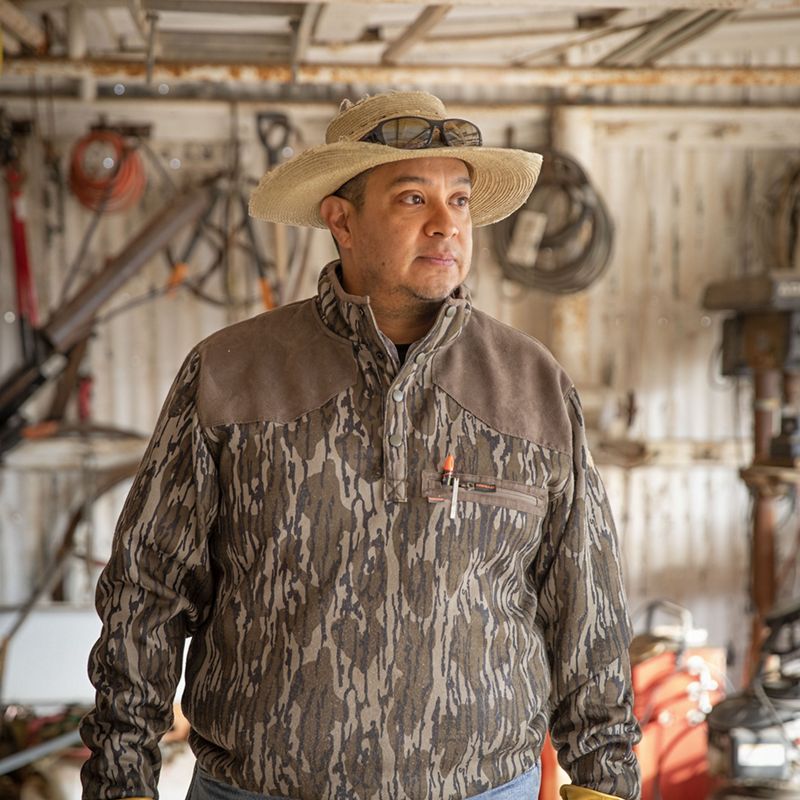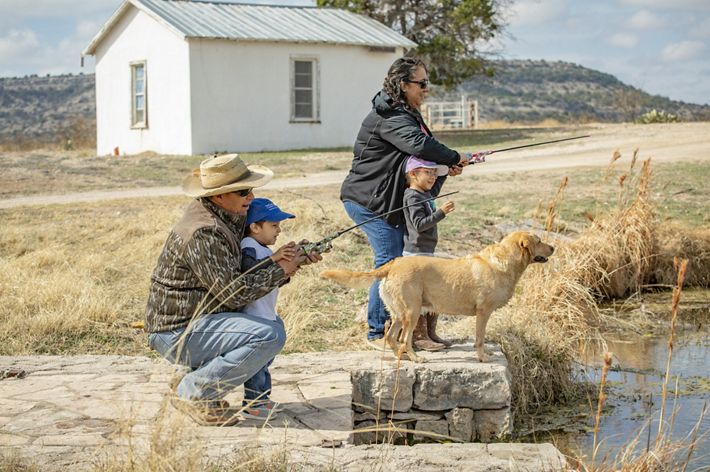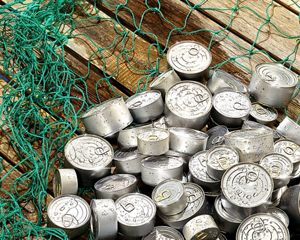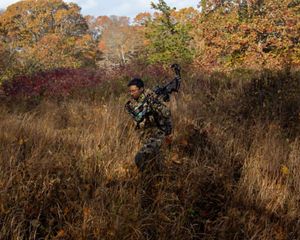
Desert Dweller
Sergio Gonzalez manages West Texas preserves for The Nature Conservancy. In this Q &A he talks about conservation in the desert.
Summer 2023 Issue
You live and work at Independence Creek Preserve, a prickly and remote 19,740-acre oasis in the Chihuahuan Desert of West Texas. How do you spend your days?
We’re trying to reestablish the native grasslands, which will recharge the aquifer and help the Pecos River. There wasn’t a property manager here for a while, and brush encroaches quickly. Right now, my number-one goal is to reopen the main trails and get things up and running. I’m removing ash juniper, which helps open up space for native grasses.
You’re a land manager but you spend a lot of time thinking about water. Why?
Caroline Springs [on the preserve] flows into Independence Creek, which then flows into the Pecos River. It all flows into the Rio Grande, and that’s what citizens [in the Rio Grande Valley] use as drinking water, so having a cleaner river system is key. The Pecos needs cleaner water to flush out the sediment it’s collecting upstream, and [Caroline Springs] helps the clarity of the Pecos.
What’s it like to live in an oasis?
I’m the type of person who can sit outside and watch the clouds. We have so many birds that come in between March and mid-May during their spring migration. The singing they produce is catchy. From October to November the wildlife comes out—the deer and the javelinas. I’ve seen a handful of rattlers, and almost stepped on one. It’s “wow.”
You and your wife Maritza have two kids—Annalee, 7, and Isaiah, 4. What’s it like raising them out here?
They took to [living out here] like ducks on water. My little girl is a big fisherperson she can read the water really well and tell you that a watermelon color lure will work better than a dark green one. I put whatever she wants on that hook, and she’ll go to town. She gets upset when we go to Midland or Odessa and she sees trash. She asks, “Why aren’t these people helping the environment? Don’t we want to take care of it and educate them on how to protect Earth?” She’s taking our mission to heart. My little boy loves running around and will tell you, “Don’t touch that, it’ll poke you.”
Tell us about your roots. I heard your father was an agricultural foreman, overseeing work on farms in Michigan, where migrant workers from South Texas travel each summer to pick crops.
I was born and raised in Raymondville, Texas. My parents cultivated fields and picked tomatoes, potatoes, corn and apples during the summers in Michigan. I don’t think there was one summer we ever missed.
What inspired you growing up to care about protecting the environment?
My grandma on my dad’s side was more of a conservationist and she planted the idea in my head. Growing up Hispanic and eating what the Earth provides you, that was important. My grandmother was always cooking nopalitos and gathering hens’ eggs. My grandparents thought it was important to collect rainwater for the plants, and I’m doing the same thing here, trying to push back brush to regenerate the aquifers to collect rainwater, flow it down to Independence Creek, on to the Pecos and back home. I hope I’m doing what they planted in me. I’m that seed.
How did you get interested in conservation?
I’m just like every other Texas kid who loves the outdoors: Everybody wants to be a game warden. I decided to go into range and wildlife management [at Texas A&M University-Kingsville] until I got an internship with the Texas Parks and Wildlife Department during my freshman year. I worked alongside Sam Patten, a biologist at the time at Las Palomas Wildlife Management Area in the Lower Rio Grande Valley. Patten sat me down and said, “We managers are the ones who do the studies and counts and bag limits for the game wardens.” That’s when I fell in love with the land management part.
Quote
“I’m the type of person who can sit outside and watch the clouds. … From October to November the wildlife comes out—the deer and the javelinas. I’ve seen a handful of rattlers, and almost stepped on one. It’s ‘wow.’”
You joined The Nature Conservancy about five years ago and spent two years at the Lennox Foundation Southmost Preserve, at the southern tip of Texas near Brownsville. What was that like?
We worked with U.S. Fish and Wildlife to help with the wildlife corridor [which includes the preserve and stretches along the last 275 river miles of the Rio Grande before it flows downstream into the Gulf]. Whatever type of brush, trees or plants they needed, we would collect, harvest the fruit, get the seed and plant it during the season to have the plant ready for them.
What was it like to move from lush, semi-tropical South Texas to the arid West Texas desert?
It was great. You don’t have the humidity out here. The foothills, the mesas, the plateaus—that’s what caught me. Just seeing those hills, it’s breathtaking. The biggest hill in the Rio Grande Valley is our landfill.
You oversee several other Nature Conservancy properties in West Texas, including the 4,099-acre Diamond Y Spring Preserve—home to one of the largest and last remaining ciénaga systems, or spring-fed wetlands, in West Texas—as well as the 4,788-acre Dolan Falls Preserve on the Devils River. That’s a special place. Cool, clear water spills through rocky chutes and over a limestone ledge.
Everybody comes back to the clarity of the Devils River. It’s a beautiful landmark and a baseline for our river system because of that clarity. It’s so off the beaten path. There’s no cell service and the population out there is nearly nothing. You take that turn and get off on the long, bumpy caliche road—it’s like Dorothy overlooking the Emerald City in The Wizard of Oz. That feeling of excitement, that’s what I get when I go out there.
West of where you are, the world’s largest International Dark Sky Reserve, called the Greater Big Bend International Dark Sky Reserve, encompasses more than 9 million acres in West Texas and northern Mexico. Why is that important?
Migratory bats and insects need dark skies. Dark skies just reset everything. They reset our clarity of thinking—but they also help reset nature itself.
Magazine Stories in Your Inbox
Sign up for the Nature News email and receive conservation stories each month.



